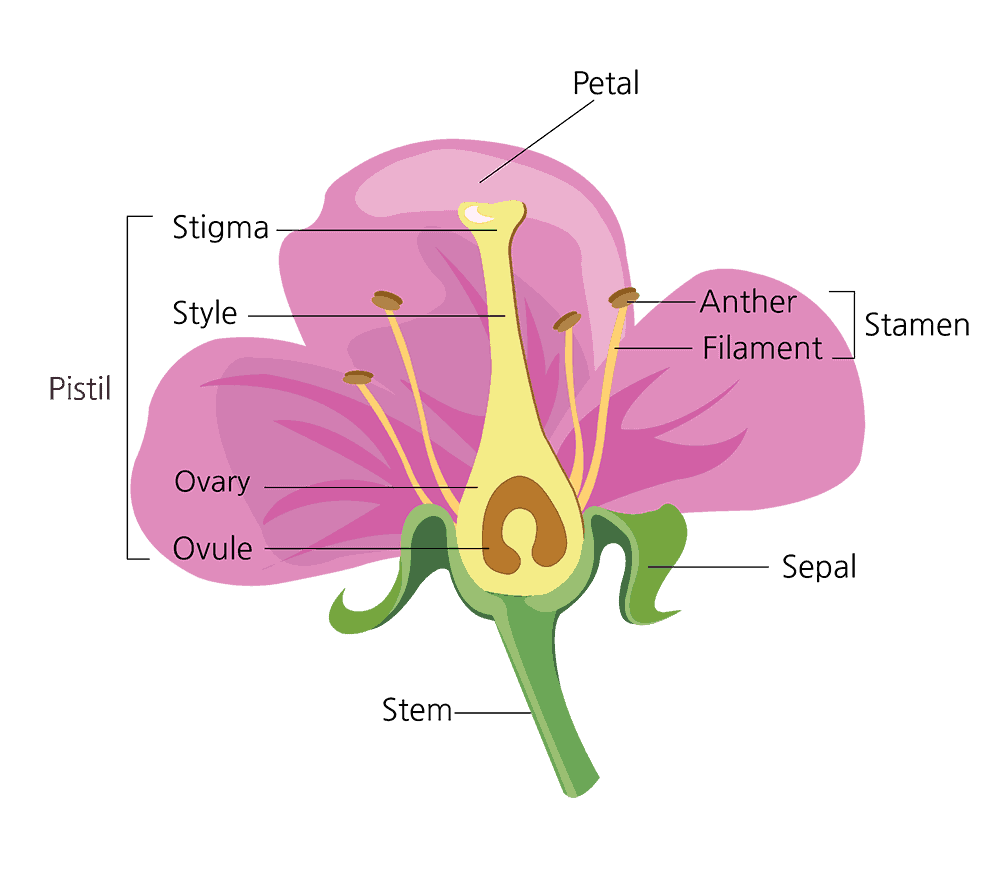
Parts of a Flower and Their Functions (With Diagram)
Learn and label the different parts of plants and flowers using these helpful worksheets. The resource features a flower and plant diagram letting you label the indicated parts of a flower and parts of a plant. Through labeling a plant and flower your students can learn and visualize where each important element of a plant is situated.
Flower structure diagram / RHS Campaign for School Gardening
How to draw and label a flower 🌷step by step tutorial Members only Adimu Show 42.7K subscribers Subscribe 11K Share 4 years ago A beautiful drawing of a flower. And it will teach you how to.

Plant Parts Flower Diagram Parts of a flower, Diagram of a flower, Flower anatomy
Receptacle: The part of a flower stalk where the parts of the flower are attached. Sepal: The outer parts of the flower (often green and leaf-like) that enclose a developing bud. Petal: The parts of a flower that are often conspicuously colored. Stamen: The pollen producing part of a flower, usually with a slender filament supporting the anther.

Label A Plant Science Apple For The Teacher Ltd
Our flower labeling worksheet is a perfect way to find out what your child has learned! Use it for a quiz or extra practice studying the parts of a flower. Science Worksheets for Flowers Younger students can color the flower worksheets, while older students can label all of their parts.
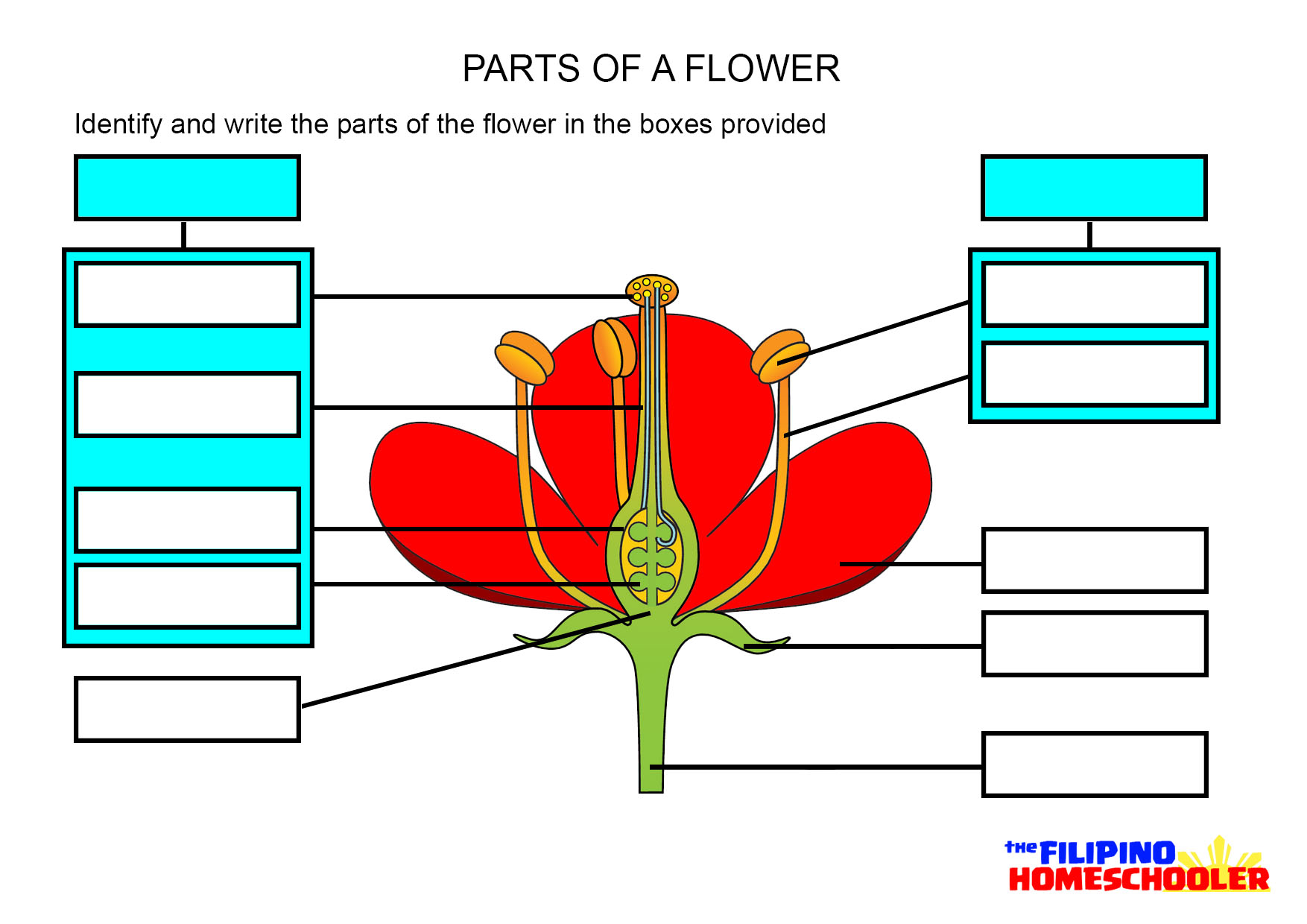
Label The Parts Of The Flower ClipArt Best
Flowers have two primary parts: the vegetative part, which includes the petals and the sepals, and the reproductive part, encompassing the stamen (male reproductive organ) and the pistil or carpal (female reproductive organ). Vegetative Parts of a Flower (Perianth)
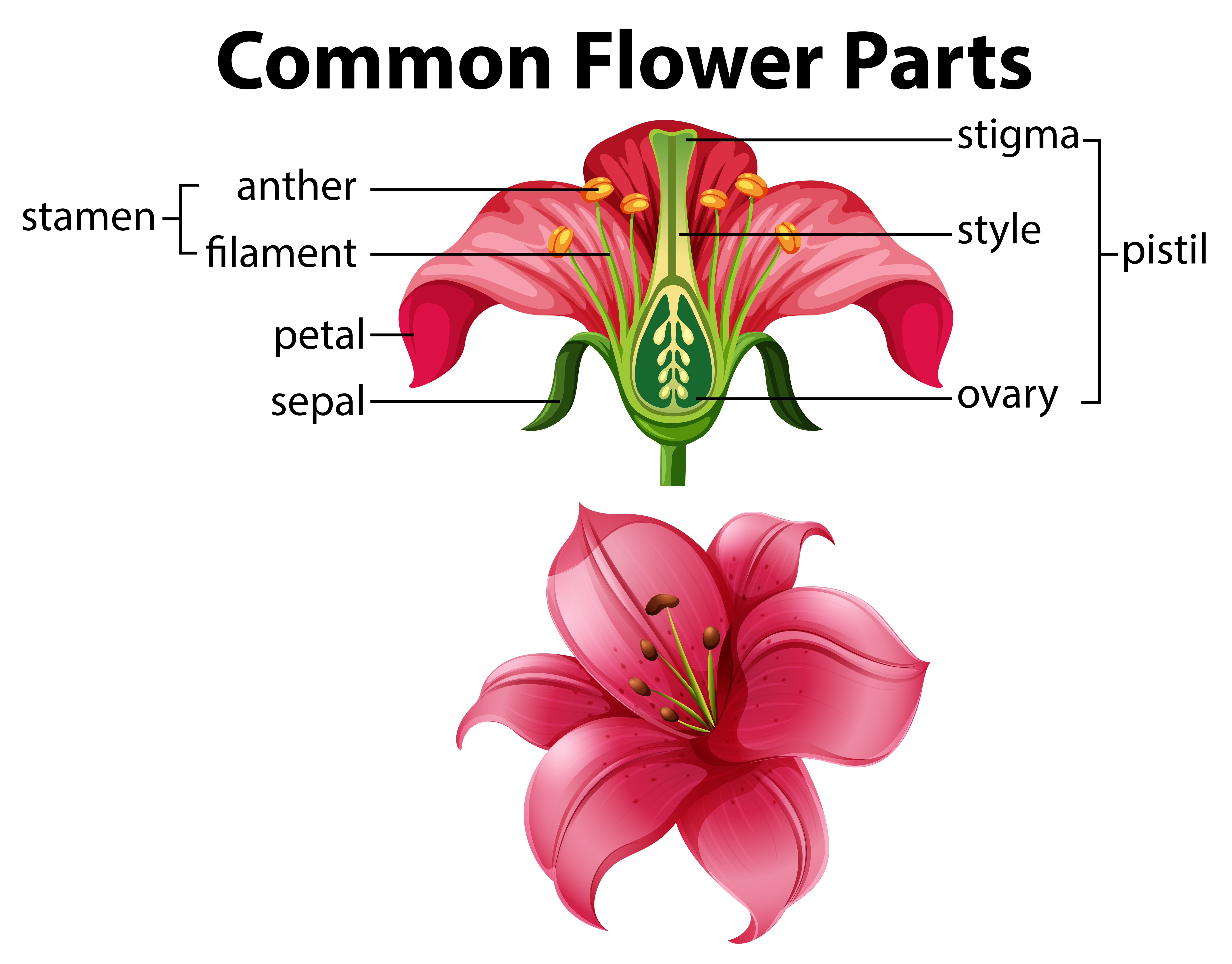
Science of Common Flower Parts 302683 Vector Art at Vecteezy
This practice sheets has students labeling the basic parts of a plant and the inner parts of the flower. Students will have to label the following: ♦ roots ♦ leaves ♦ stem ♦ petals ♦ sepals ♦ stamen ♦ stigma ♦ pistil -embryo Also included is a blank diagram of a flower so you can add more labels if your students need to know.

Morphology of Flower Flower Structure, Parts, Videos, Solved Examples Parts of a flower
Labelling Parts of a Flower Grow your flower knowledge with this excellent science activity sheet. Differentiated for all abilities, watch your child's understanding bloom as they learn to label the different parts of a flower. Download Share this resource Learning Skills Discovering the World Scientific Skills Understanding

Diagram quiz on flower Biology Lessons, Biology Notes, Teaching Biology, Science Biology
Labelling Parts of a Flower KS1 | Science | KS1-SCI006 www.wordunited.com Use the vocabulary box to label parts of a flower. Pistil Stamen Petal Stem Sepal Stigma Filament Anther Ovary Style Ovule. Labelling Parts of a Flower KS1 | Science | KS1-SCI006 www.wordunited.com Fill in the missing letters to label parts of a flower.
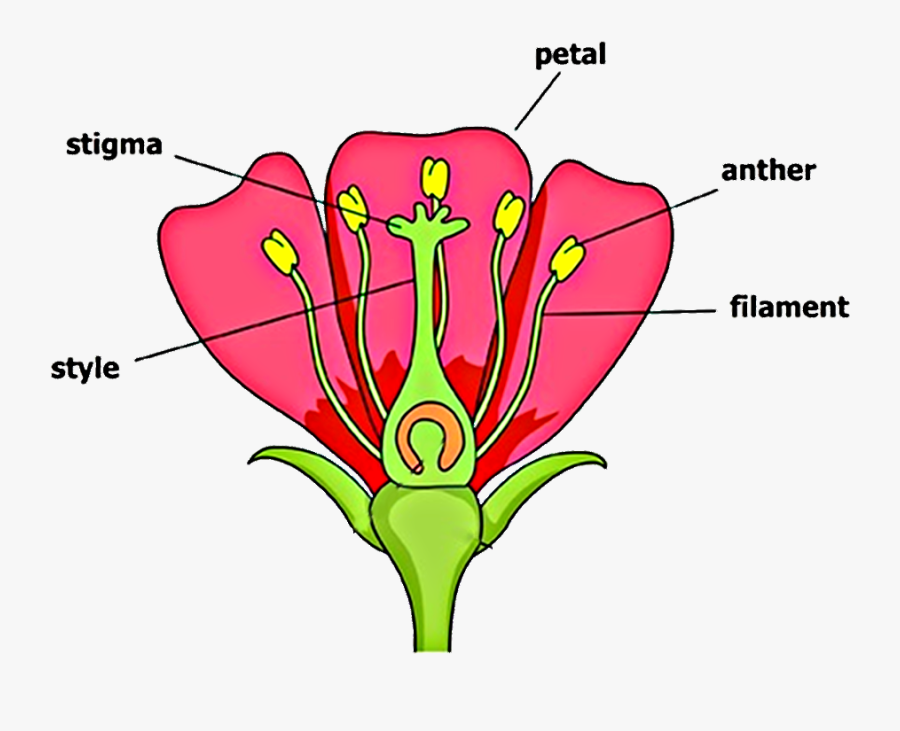
Diagram Of Flower With Labelling , Free Transparent Clipart ClipartKey
It is at the base of the pistil. petal - a petal is one of the leafy structures that comprise a flower. Petals are often brightly-colored and have many different shapes. sepal - the sepals are small leaves located directly under a flower - they are the outermost part of a flower. stem (also called the peduncle) - the stem supports the plant.

flower parts labeling.jpg
Support your pupils in learning how to label a flower with this colourful teacher-made resource. This handy Labelling a Flower Worksheet covers the parts of a plant and flower. Either use the pre-labelled version as a poster or teaching aid. Alternatively, your children can label the diagrams to reinforce their vocabulary on the topic.For teaching your KS1 (or Pre-Primary Age 3-5) you can use.
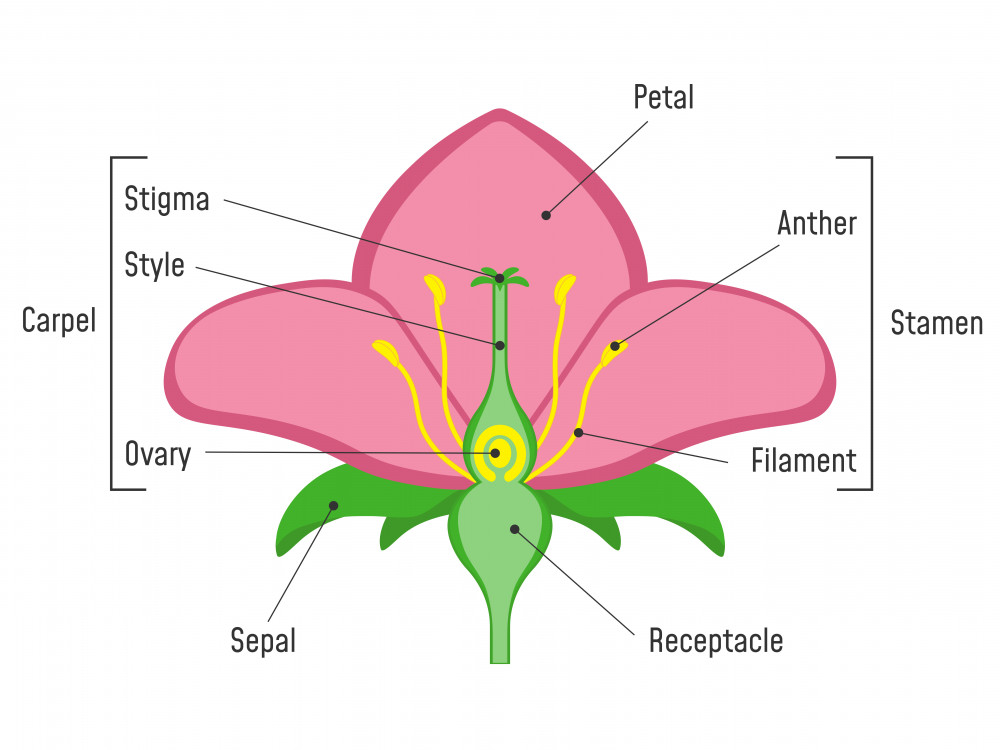
Biology Parts Of A Flower Level 1 activity for kids PrimaryLeap.co.uk
In a flower diagram, stamen are located on both sides of the pistil. The stamen consists of two parts: Anther: The anther is the head of the stamen. It produces pollen. Filament: The filament is the stalk attached to the flower that holds the anther. The stamen's function is to produce male reproductive cells.

Flower Parts of a Plant Worksheet Have Fun Teaching Parts of a flower, Plants worksheets
Labor-intensive labeling becomes a bottleneck in developing computer vision algorithms based on deep learning. For this reason, dealing with imperfect labels has increasingly gained attention and has become an active field of study. We address learning with noisy labels (LNL) problem, which is formalized as a task of finding a structured manifold in the midst of noisy data. In this framework.
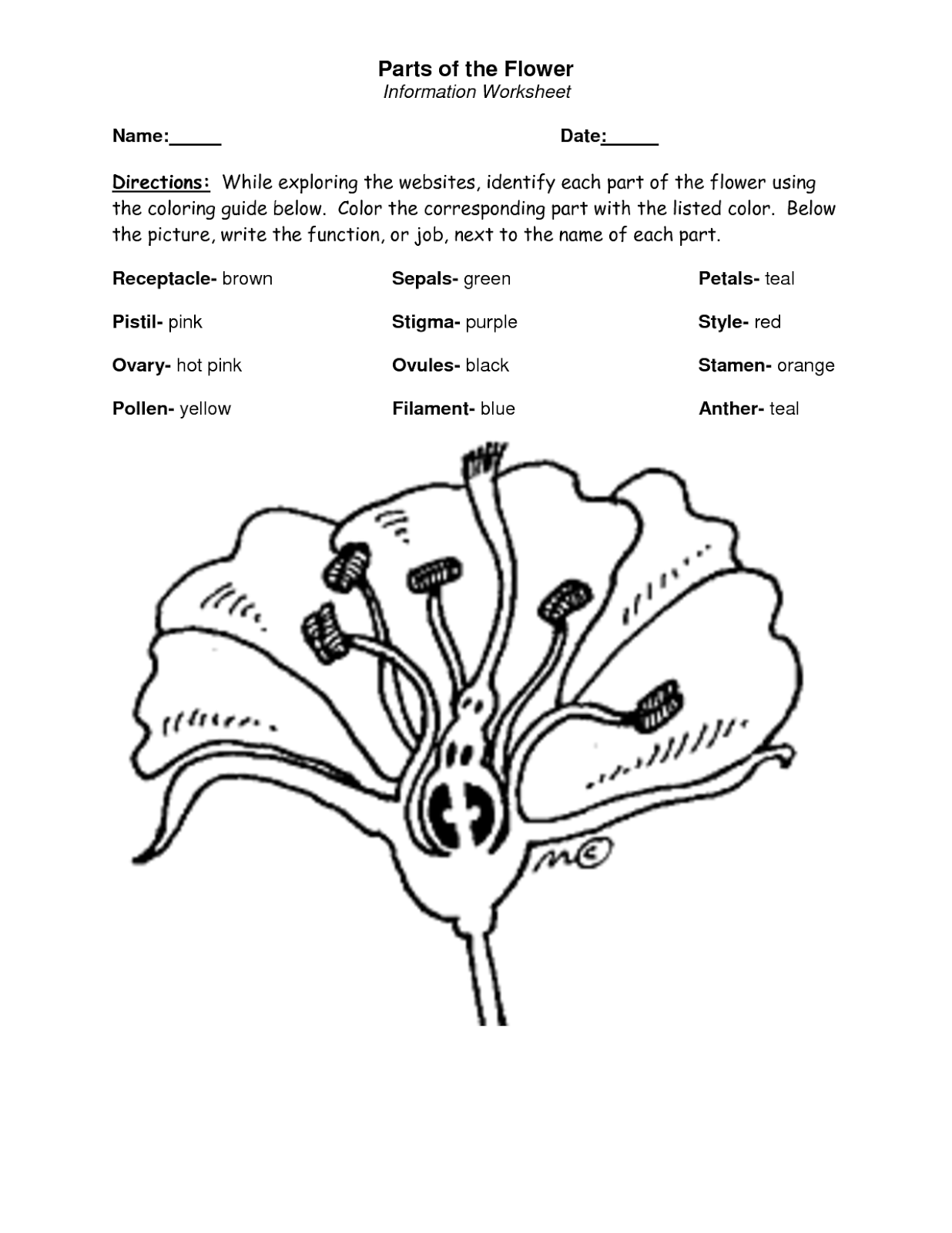
11 Best Images of Worksheet Label Parts Of A Tree Plant Parts Worksheet Grade 2, Flower
Parts of a Flower; Parts of a Flower - Map Quiz Game. Anther; Filament; Ovary; Ovules; Pedicel; Petals; Pistil; Receptacle; Sepal; Stamen; Stigma; Style; You need an account to play. Create challenge. 0/12 0 % 00:06 Click on Pedicel > Click on Pedicel. Game mode: Pin Type Show more game modes. Learn. Restart---Your high score (Pin)

Solved 23. 0.52 points value Label the parts of a typical
PARTS OF A FLOWER PLANT GAME Identify and label figures in Turtle Diary's fun online game, Parts of a Flower Labeling! Drag given words to the correct blanks to complete the labeling!
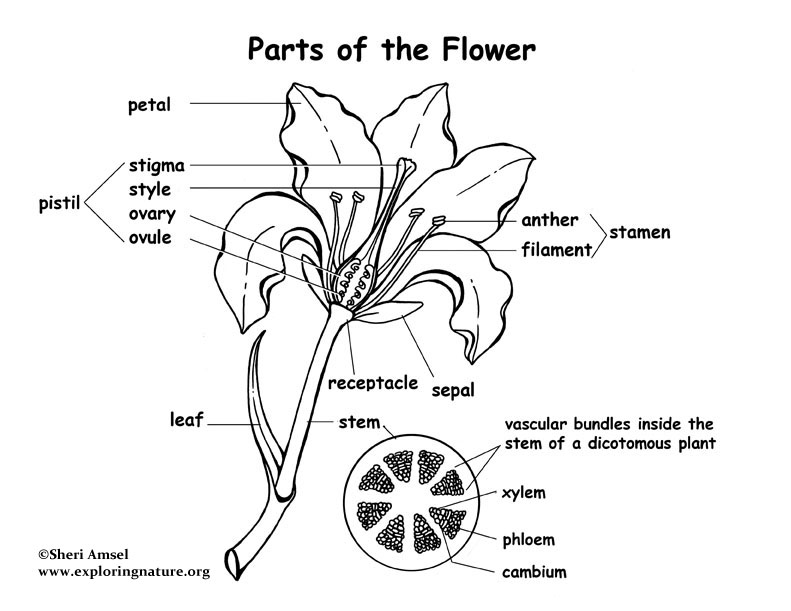
Flower Parts Labeling Page
anther pollen Download Exercise Tweet Rights: The University of Waikato Te Whare Wānanga o Waikato Published 6 December 2022 Referencing Hub media Flowers are how most plants produce seeds. In this interactive, you can label the flower parts. Use your mouse or finger to hover over a box to highlight the flower part to be named.
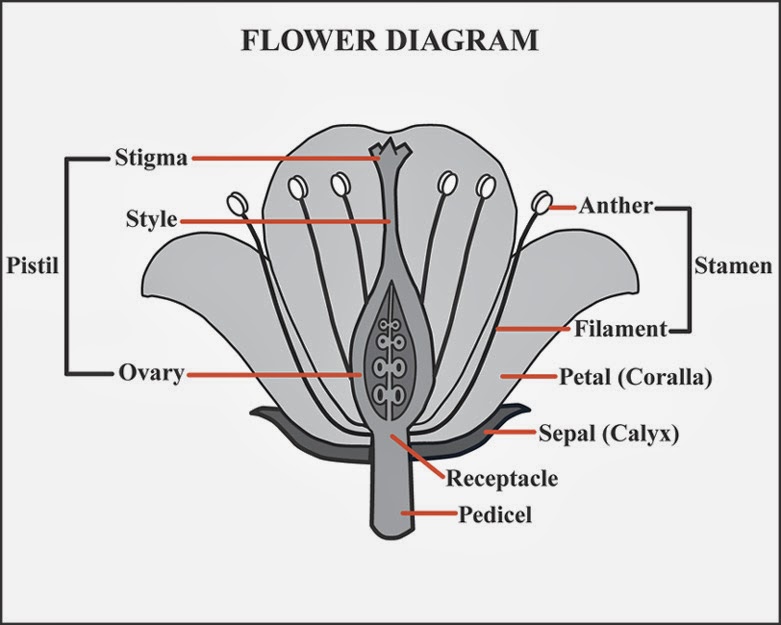
7th Grade Science 201314 Cross Pollination and Parts of a Flower
This fantastic parts of a flower labelling activity is a fun and interactive way for your class to familiarise themselves with the different parts of a flower. Interactive labelling activities like this one do a great job of helping children visualise the information that they're learning. This is essential when learning about topics such as.